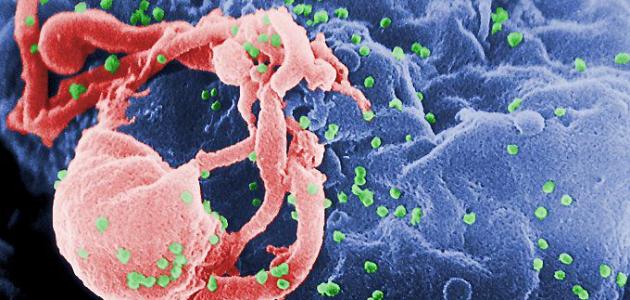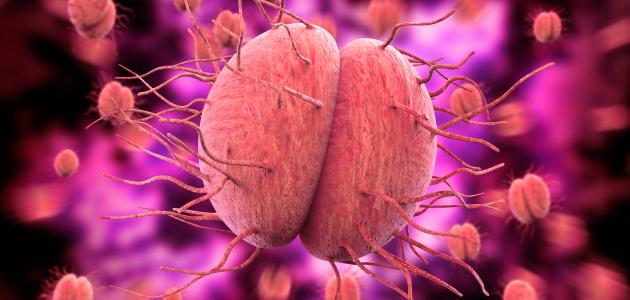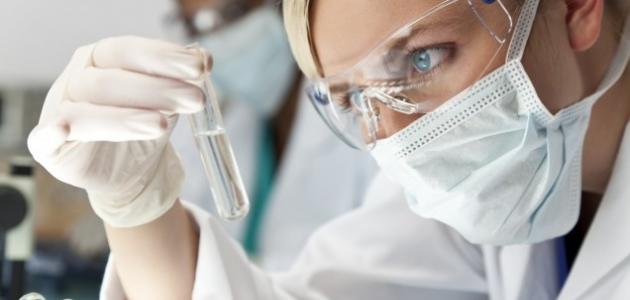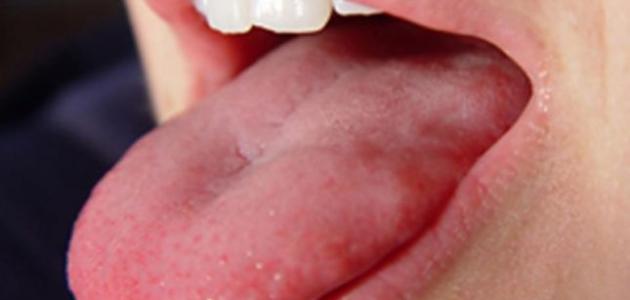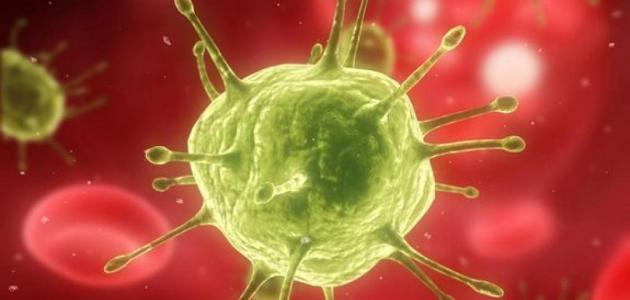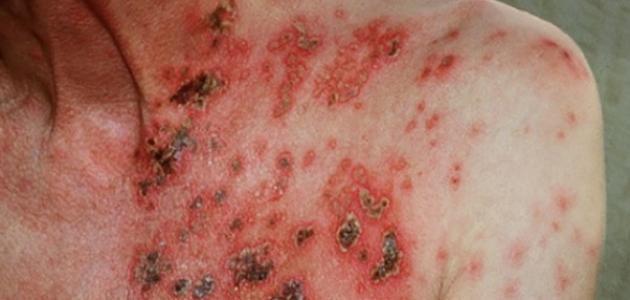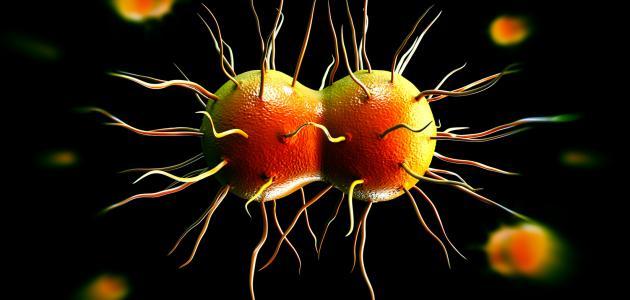Contents
AIDS
The term AIDS, AIDS, or Acquired Immune Deficiency Syndrome (AIDS) is a medical condition that describes a group of diseases and infections that may threaten a person’s life and that occur when HIV is exposed . virus) for short, (HIV) the human body's immune system to be damaged, harmed or severely damaged As this virus weakens the ability of the device to resist diseases and infections that the patient may be exposed to on a daily basis and destroy cells in it, [1]And unlike the acquired immunodeficiency syndrome, this virus can transmit from one person to another, and although there is no treatment for this virus at the present time, diagnosing the condition early and obtaining effective medical treatments will enable most of the infected people to live almost normally and not have the diseases associated with the syndrome ; Where there are a number of highly effective therapeutic drugs that help most sufferers lead a healthy and long life. [2]
To learn more about AIDS, you can read the following article: ( What is AIDS ) .
The stages of AIDS
The stages of AIDS can be explained in order in some detail as follows:
Acute HIV infection
The natural response of the human body after being infected with HIV is to have acute retroviral syndrome (ARS) or primary HIV within a period of time ranging from two to four weeks after catching the infection; So that they appear as symptoms similar to those associated with influenza, but it must be noted that ARS may not develop in all those infected with the virus, or only some of its symptoms may develop, and to understand this response it must be explained that what is happening during this period of infection is the production of quantities The number of CD4 cells that are important in the immune system decreases rapidly due to their destruction after being used by the virus to make copies of it; They are differentiation block cells, also called T cells or T cellsThe help, and the immune system tries to attack the virus through antibodies to it, in a process called seroconversion. That is, the symptoms appear as a reaction to catching the virus, and the rotation of infected cells in the blood system, and talking about the timing of this process, it is not stable and different, but the body may need several months to start it, and in the end the immune system will respond in the human body; Its response is to reduce the quantities of the virus to stable levels, and despite the possibility that differentiation cells will not return to their previous levels before infection, their numbers will start to rise, and at this stage the quantities of the virus in the blood are high, which makes the ability of its spread in it to be great so that it is the highest compared to other stages, This may increase the likelihood of passing it on to other people. [3] [4]
Returning to talking about the symptoms that may accompany this stage or early symptoms of the virus, they usually last for no more than a week or about two weeks in the event that they appear, and it should be noted that the appearance of such symptoms on the body does not necessarily mean infection with the virus and that conducting an examination is the only way to confirm infection Therefore, in case of suspicion or a high risk of contracting the virus, the doctor should be consulted regardless of the appearance of symptoms or not, and the doctor will answer questions and determine the correct timing for the examination. Since infection with the disease may not appear during the early stage, therefore, one must hasten to consult a doctor when there is doubt about the possibility of infection, and it is recommended to use condoms during sexual intercourse, especially in case of suspicion of infection with the virus, in order to protect the partner from infection, and these symptoms can be explained as follows: [3] [4]
- Fever or high temperature.
- Skin rash.
- Sore throat.
- Swollen glands.
- Headache .
- Feeling of discomfort in the stomach.
- Joint pain.
- Muscle pain.
Clinical latency stage
This stage is called clinical latency, HIV inactivity or inactivity, and it is also sometimes called the asymptomatic phase or chronic HIV infection, and this stage is characterized by several Characteristics of the following are mentioned: [5]
- The virus replicates at very low levels, although it remains active at this stage.
- The possibility of transmitting the infection, however, those infected who receive proper treatment and the virus remain suppressed or suppressed and have non-traceable (low) quantities will not transmit the virus to the uninfected partner.
- The possibility that infected persons will not show any symptoms or are exposed to the disease, [5] where the absence of symptoms can be inferred from the stage name which is latency, and the patient may feel in good health and appear healthy so that no signs appear on it, however the virus continues to weaken the immune system . [6]
- The continuation of this stage for a period of time that may reach a decade or more for people who are not subject to treatment, but some may pass it faster than that; The average ranges from 8 years to 10 years, and those infected at this stage may not know that they have the disease without conducting the examination, and people who receive antiviral therapy or (ART) as it was prescribed to them may remain at this stage for several decades. [5] [6]
- The beginning of a decrease in the number of helper cells (or CD4) and an increase in the viral load (quantities of virus) at the end of this stage, which leads to high levels of the virus in the body and the possibility of symptoms appearing and the patient moving to the third stage. [5]
The stage of onset of HIV symptoms
It is at this stage that the symptoms of HIV begin to appear; Where the immune system has been damaged and weakened over time, and the cause of these symptoms is opportunistic infections ; These include toxoplasmosis , tuberculosis , Kaposi sarcoma , and pneumonia. Where these infections take advantage of a weakened immune system and from here derives its name, ranging from the severity of symptoms resulting from these infections between the minor initially to severe then, [6] As mentioned comes to her: [4]
- Weight loss.
- Chronic diarrhea.
- Sweating at night.
- fever.
- Skin and mouth problems.
- Regular infection.
- dangerous diseases.
- Persistent cough
- Exhaustion .
- Swollen lymph nodes; And it may be one of the first signs of infection. [7]
- Thrush or oral yeast infection . [7]
- Shingles is also called herpes zoster. [7]
- Pneumonia. [7]
Acquired Immune Deficiency Syndrome
HIV carriers are diagnosed with acquired immunodeficiency syndrome if the CD4 numbers reach less than 200 cells per cubic millimeter or in the case of a specific opportunistic infection, and the syndrome is the final and most severe stage of virus infection; At this stage, infected people can pass the virus to others easily because they have very high levels of it, and the immune system has been severely damaged and damaged by it and therefore cannot resist opportunistic infections, [8] which leads to the emergence of many severe symptoms and diseases related to the virus or Opportunistic infections, and it should be noted that a doctor should be visited if any of these symptoms appear: [9]
- Rapid weight loss.
- Unexplained extreme fatigue.
- Diarrhea that lasts for more than a week.
- Memory loss, depression and other neurological disorders.
- Frequent fever and night sweats .
- Extended swelling in the lymph nodes in the armpit, neck, and groin.
- Sores in the mouth, anus and genitals.
- The appearance of red, brown, pink, and purple spots on and under the skin or inside the eyelids, nose and mouth.
Preventing the progression of AIDS
Early diagnosis and obtaining appropriate treatment drugs is the most effective way to slow the progression of the virus or stop its progression. [10] The options available to help prevent disease progression can be detailed in some detail as follows:
Medicines
The following is a mention of the therapeutic drugs used to inhibit the development of the virus in some detail: [10]
- Anti-retroviral therapy: , for short (ART), the doctor may use in this treatment a group of medical drugs for each patient with the aim of suppressing the activity of the virus, increasing the immunity of the infected person, prolonging the life expectancy of the individual, and it also reduces the chances of virus transmission For others, this treatment is suitable for all stages, but the medication schedule must be strictly adhered to to ensure its effectiveness and prevent virus resistance to the prescribed drugs.
- Therapeutic and prophylactic drugs prior to exposure to the virus: or prevention or pre - exposure prophylaxis before exposure and Acronym (PrEp) , a preventive medicine; It includes medical treatments available to people who are not infected with the virus and who are at high risk of contracting it.
- Preventive therapeutic drugs after exposure to the virus: or post-exposure prophylaxis (PEP), and this treatment aims to stop the virus and prevent its development into a long-term condition, and people resort to it as an emergency treatment for those who think that they have been exposed to the virus within 72 hours of Potential exposure.
Lifestyle
Some life factors play an important role in the development of the disease after the diagnosis of infection with the virus, including the factors that contribute to strengthening the immune system and helping the body to deal with the infection, and in what follows it is mentioned: [10]
- Reduce stress: raises stress the risk of developing diseases and opportunistic infections and weakens the immune system.
- Avoid infection: Those infected with the virus must receive the vaccinations suggested by the doctor, and they must also follow the necessary steps to protect against disease and infection.
- Exercising regularly: Regular exercise has many benefits for those infected with the virus; Improving sleep quality, reducing stress, improving blood circulation and lung capacity, increasing energy, and reducing the risk of heart disease.
- Eating healthy food: Food rich in nutrients helps the treatment to work properly, and adhering to a healthy, balanced diet and avoiding alcohol helps boost the immune system and prevent infection.
- Quit smoking: the risk of infection with some diseases is higher for smokers and people with HIV, including multiple types of cancer, heart disease and chronic obstructive pulmonary disease, as well as infection with some types of infections such as pneumonia and candidiasis .
References
- ↑ "HIV and AIDS" , www.nhs.uk , 03-04-2018, Retrieved 16-07-2020. Edited.
- ↑ "HIV and AIDS" , stmelorhousesurgery.co.uk , 04-03-2018 , Retrieved 16-07-2020. Edited.
- ^ A b "What are the stages of HIV? " , ualr.edu , Retrieved 16-07-2020. Edited.
- ^ A b t " the AND STAGES OF the SYMPTOMS of HIV INFECTION" , Www.avert.org , 03-07-2020, Retrieved 20-07-2020. Edited.
- ^ A b T w "About of HIV" , Www.cdc.gov , 14-07-2020, Retrieved 20-07-2020. Edited.
- ^ A b v "Stages of HIV Infection Of" , Www.hivireland.ie , Retrieved 20-07-2020. Edited.
- ^ A b T w " of HIV / AIDS" , Www.mayoclinic.org , 13-02-2020, Retrieved 20-07-2020. Edited.
- ↑ "HIV Overview" , aidsinfo.nih.gov , Retrieved 20-07-2020. Edited.
- ↑ "Symptoms of HIV" , www.hiv.gov , 01-07-2020, Retrieved 20-07-2020. Edited.
- ^ A b T. Jayne , Leonard (07-06-2018), " of HIV the timeline: What ' The Stages are On ?" , Www.medicalnewstoday.com , Retrieved 20-07-2020. Edited.
